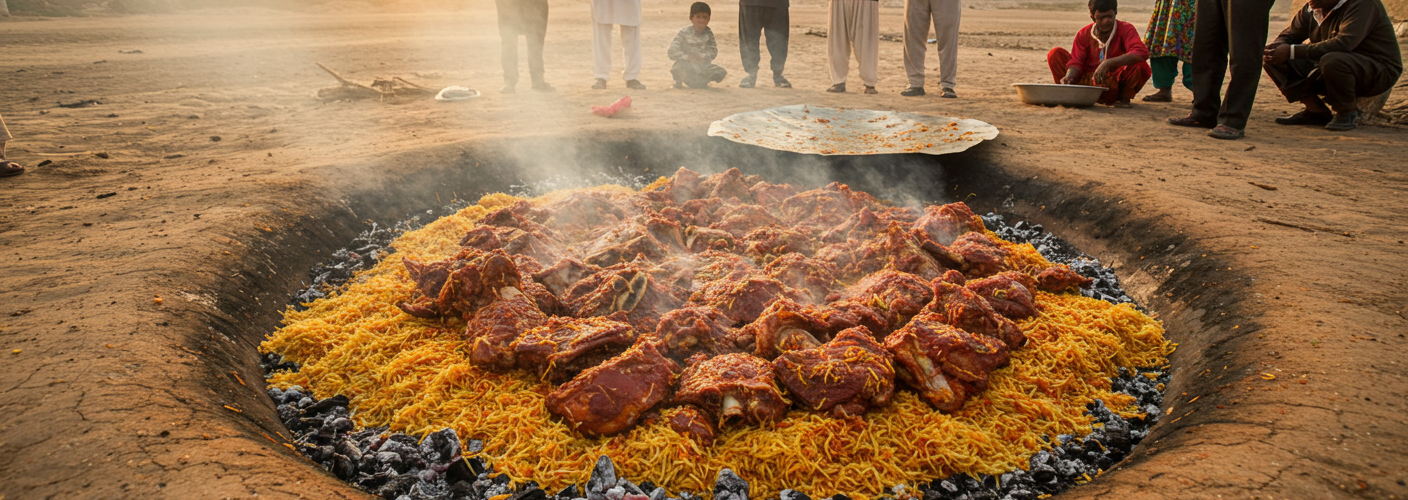Mandi is a cherished dish from the Arabian Peninsula, specifically popular in countries like Saudi Arabia, Yemen, and the United Arab Emirates. This exquisite dish embodies a rich history and a blend of spices, representing the culture and hospitality of the region. What makes Mandi particularly unique is not just its flavor, but also its traditional cooking method, where meat and rice are cooked together in an underground pit, infusing them with smoky aromas and deep flavors.
A Culinary Journey Through Time
Mandi’s origins can be traced back centuries, believed to have first emerged in Yemen before spreading across the Arabian Peninsula. Traditionally, this dish is associated with special occasions, family gatherings, and large celebrations. Its preparation is often a communal activity, bringing people together in the spirit of hospitality.
The preparation of Mandi involves marinating large cuts of meat, often chicken or lamb, with a concoction of spices that typically includes saffron, cardamom, cloves, and bay leaves. The marinated meat is then traditionally slow-cooked in a pit, a method known as ‘dukhoun,’ which translates to ‘smoke.’ This underground cooking method not only infuses the meat with robust flavors but also retains its juiciness, resulting in tender, flavorful bites that melt in your mouth.
Cooking Techniques
Creating Mandi involves several key steps. First, the chosen meat is marinated in a blend of spices and sometimes yogurt, allowing the flavors to penetrate deep within. While the meat is marinating, the rice is prepared, often seasoned with turmeric to give it a beautiful golden hue.
Once marinated, the meat is placed in a large pot over a fire, accompanied by the seasoned rice. What follows is a unique method of cooking: the pot is covered, and a lid or cover is placed on top, trapping heat and smoke inside. The aromas mingle, enhancing the taste of both the meat and the rice.
While the traditional method involves cooking in a pit, modern adaptations may use the oven or stovetop. Regardless of the method, the essence of Mandi remains intact—a harmonious blend of spices, meat, and rice.
Serving Tradition
Mandi is more than just a dish; it is a symbol of generosity. When served, it is common to see the dish presented on a large platter, with the meat beautifully arranged atop a bed of rice. It is often garnished with fried onions, nuts, and fresh herbs, creating a visually stunning centerpiece for any meal.
Traditionally, Mandi is served with a side of spicy tomato sauce or yogurt, adding an extra layer of flavor and a mild kick. It is customary to eat Mandi with the hands, promoting a sense of togetherness and shared experience, as people gather around the platter, enjoying the wholesome meal in a communal manner.
Conclusion
Mandi is not simply a meal but a celebration of culture, tradition, and togetherness. It encapsulates the essence of Arabian hospitality, showcasing flavors that have captivated palates for generations. Whether enjoyed at a festive gathering or a simple family dinner, Mandi continues to be a beloved dish that connects people through its rich flavors and heritage. The experience of sharing Mandi, with its savory aroma and delicious taste, truly makes it a culinary masterpiece worthy of any occasion.




Add comment